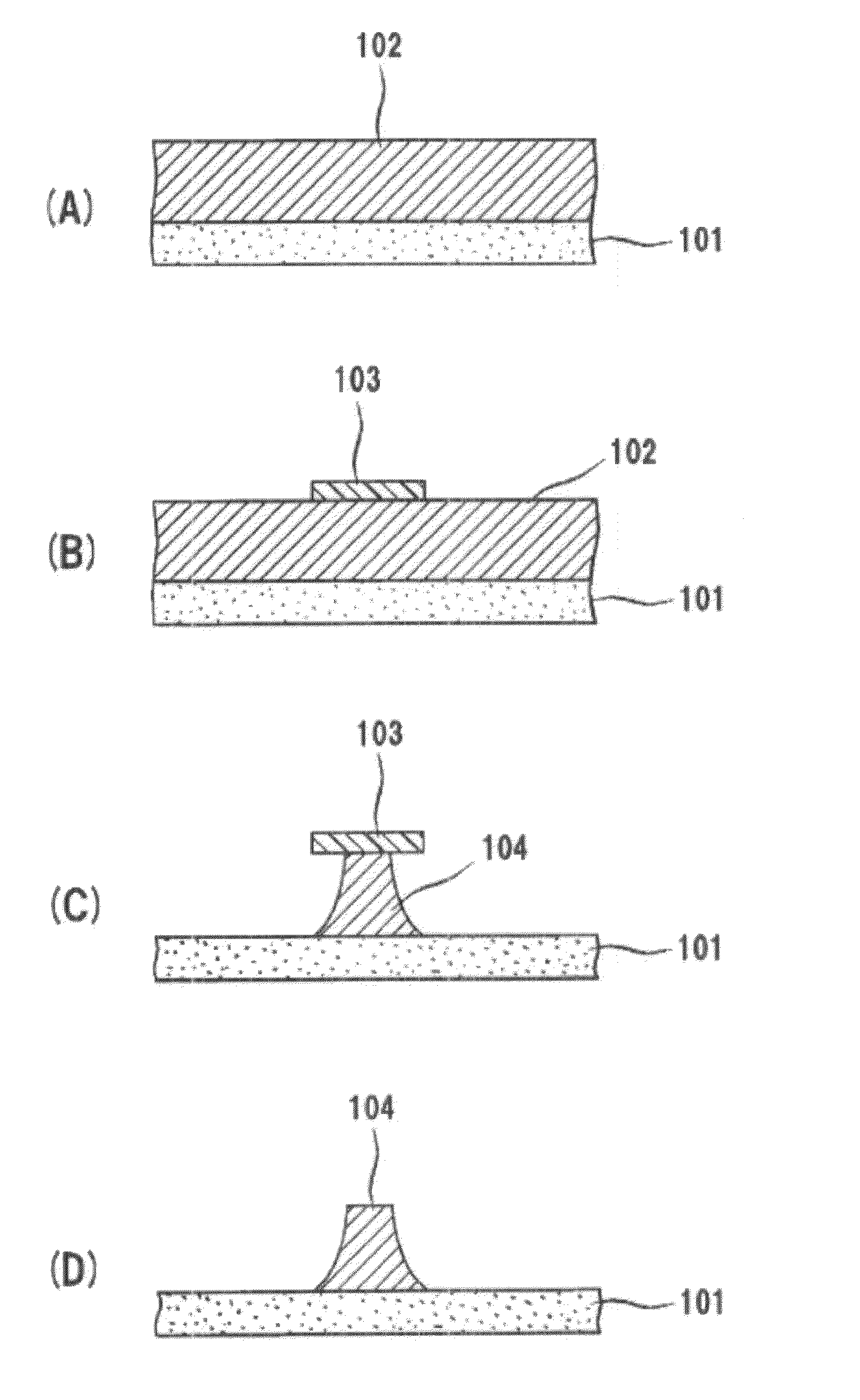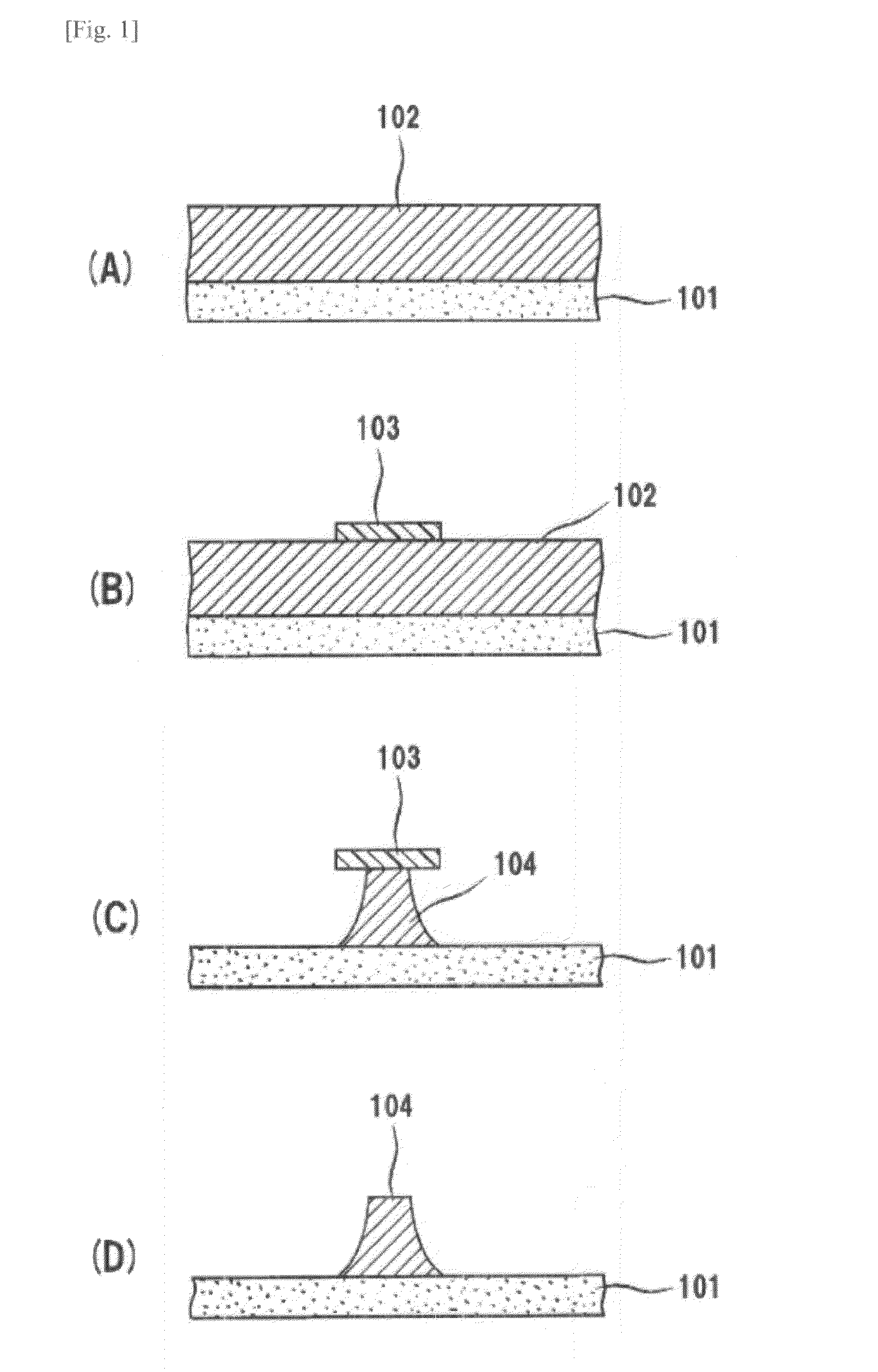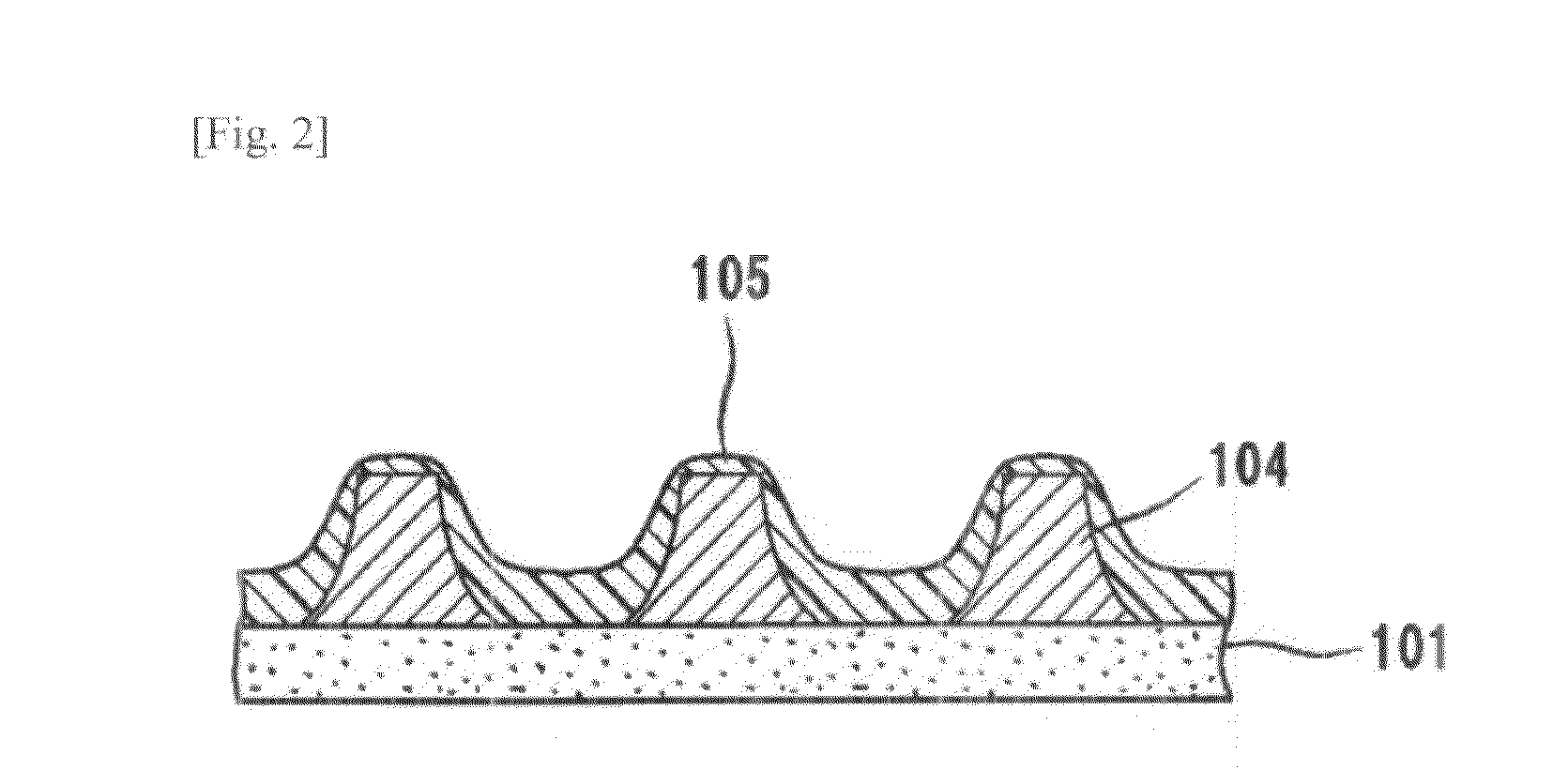Photosensitive composition, hardened coating films therefrom, and printed wiring boards using same
a technology of hardened coating film and photosensitive composition, which is applied in the direction of photosensitive materials, photomechanical equipment, instruments, etc., can solve the problems of insufficient embedding of semi-cured insulating resin layer, difficult to precisely control the resulting circuit width, and difficult to ensure the circuit width accuracy. , to achieve the effect of improving heat resistance, easy coating, and excellent toughness
- Summary
- Abstract
- Description
- Claims
- Application Information
AI Technical Summary
Benefits of technology
Problems solved by technology
Method used
Image
Examples
synthesis example 1
[0158]To a four-necked flask equipped with a stirrer and a reflux condenser, 220 parts (1 equivalent) of a cresol novolac-type epoxy resin, EPICLON N-695 (manufactured by DIC Corporation, epoxy equivalent=220) was loaded, 216 parts of carbitol acetate was added thereto, and the resulting mixture was dissolved by heating. Then, 0.46 part of methylhydroquinone and 1.38 parts of triphenyl phosphine were further added as a polymerization inhibitor and a reaction catalyst, respectively. This mixture was heated to 95 to 105° C., 57.6 parts (0.8 equivalent) of acrylic acid and 34 parts (0.2 equivalent) of p-phenylphenol were slowly added thereto dropwise, and the resultant was allowed to react for 16 hours. The resulting reaction product (hydroxyl group: 1 equivalent) was cooled to 80 to 90° C. and 87 parts (0.56 equivalent) of tetrahydrophthalic anhydride was added. The resultant was allowed to react for 8 hours and then cooled before being recovered. The thus obtained carboxyl group-cont...
example 1
[0164]The photosensitive resist compositions A to K diluted with dipropylene glycol monomethyl ether to 400 dPa·s were each printed on a 1.6 mm-thick copper foil-etched substrate of glass epoxy (FR-4 substrate) and dried at 90° C. for 30 minutes, thereby obtaining substrates on which a resist having a dry film thickness of 300 μm or 400 μm was formed. Then, using an ultrahigh-pressure mercury lamp-equipped exposure apparatus (manufactured by ORC Manufacturing Co., Ltd.), a pattern having a minimum line-and-space of 300 μm was drawn on each of the thus obtained substrates at an ultraviolet exposure dose of 400 mJ / cm2. Thereafter, the pattern was developed with 30° C., 1 wt % aqueous sodium carbonate solution at a spray pressure of 2 atm and washed with water twice, thereby obtaining substrates having a photosensitive resist pattern formed thereon. The thus obtained substrates were cured in a hot-air drying oven at 150° C. for 1 hour.
[0165]Next, on the entire surface of the thus obtai...
example 2
[0166]After subjecting each of the 300 μm-thick circuit substrates thus prepared with the photosensitive resists A to K in Example 1 to a CZ treatment using an apparatus manufactured by MEC COMPANY LTD., a prepreg (high-reliability glass epoxy multi-layer material R-1650C, manufactured by Panasonic Corporation) was pasted on both sides and the resultant was laminate-molded for 2 hours under heating conditions of 110° C.×30 minutes+180° C.×90 minutes, pressure conditions of 5 kgf / cm2×15 minutes+20 kgf / cm2 and a vacuum degree of 30 mmHg or less. The thus obtained 4-layer laminate was irradiated with single shot of carbon dioxide laser (output=13 mJ) to form a blind via-hole of 60 μm in diameter. Then, the photosensitive resists A to K having a dry film thickness of 300 μm were prepared under the above-described conditions and a circuit was formed therefrom in the same manner as in Example 1 to obtain a 4-layer circuit substrate having a minimum line-and-space of 300 μm. After subjecti...
PUM
| Property | Measurement | Unit |
|---|---|---|
| thickness | aaaaa | aaaaa |
| thickness | aaaaa | aaaaa |
| thickness | aaaaa | aaaaa |
Abstract
Description
Claims
Application Information
 Login to View More
Login to View More - R&D
- Intellectual Property
- Life Sciences
- Materials
- Tech Scout
- Unparalleled Data Quality
- Higher Quality Content
- 60% Fewer Hallucinations
Browse by: Latest US Patents, China's latest patents, Technical Efficacy Thesaurus, Application Domain, Technology Topic, Popular Technical Reports.
© 2025 PatSnap. All rights reserved.Legal|Privacy policy|Modern Slavery Act Transparency Statement|Sitemap|About US| Contact US: help@patsnap.com



